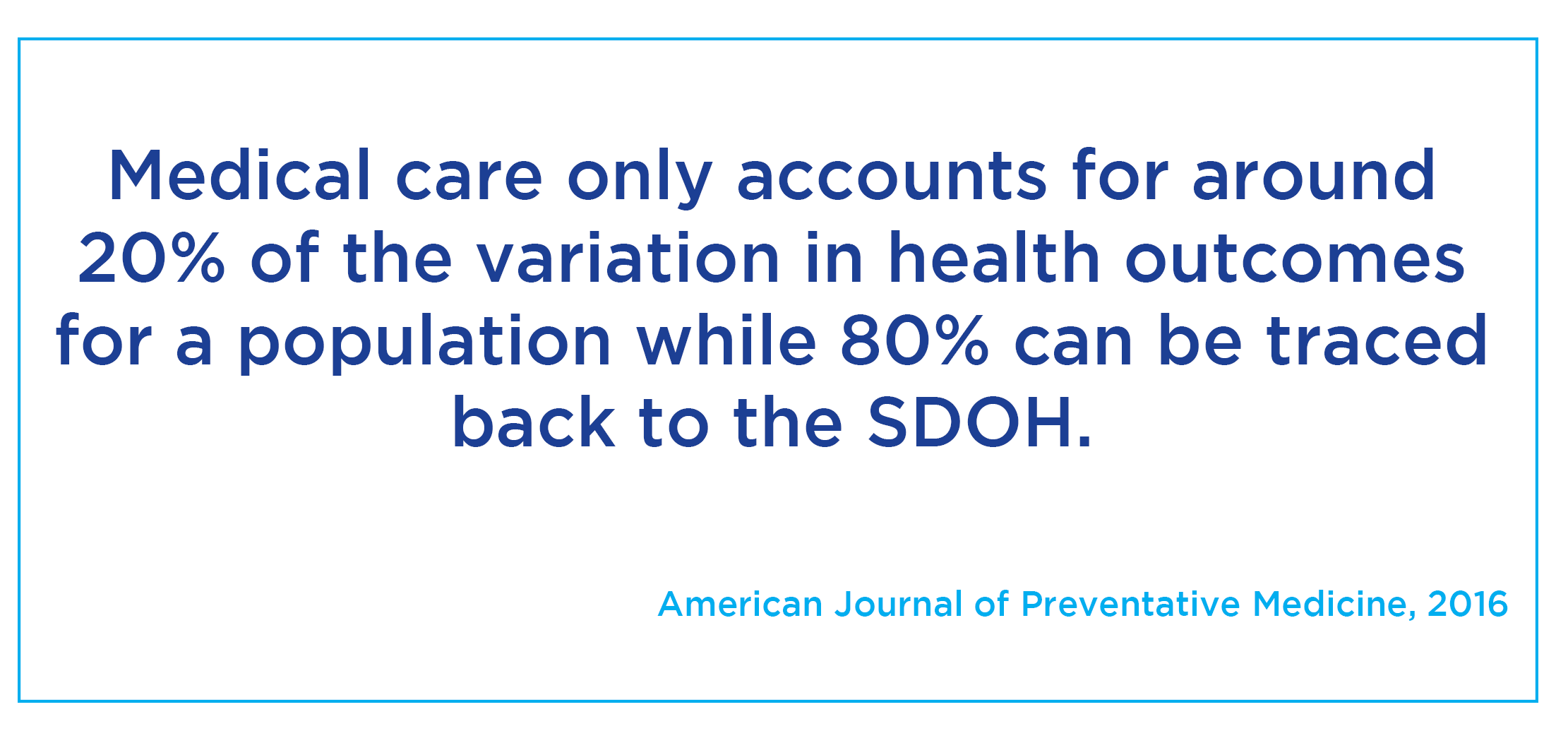As providers and payers grapple with the best ways to address social determinants of health (SDOH), they are neglecting an important and readily available tool to improve outcomes and costs. That tool is Z codes, which include a subset of ICD-10-CM codes created to report social, economic and environmental determinants in patients’ electronic records and attach to medical claims.
In the shift to value-based payments and whole-person care, managing non-medical needs is growing in importance. Doing so depends on reliable, comprehensive and robust data and analytics.
That’s where Z codes can play a pivotal role. By screening for SDOH and then using Z codes for documentation and coding, health care organizations can:
- Identify and respond to non-medical issues that affect their patients.
- Aggregate data across patients to track trends and analyze needs and gaps by geography, age and other variables.
- Layer them with other claims, data and metrics to build a fuller picture to better understand and treat different populations.
- Develop, implement, measure and adjust SDOH strategies, including enhanced or new services and partnerships with community-based organizations.

Usage challenges
Yet the use of Z codes for Medicare beneficiaries has barely budged in recent years. For 33.1 million fee-for-service Medicare members, 1.59% had claims with Z codes in 2019 compared to 1.31% in 2016, according to a recent report by the Centers for Medicare & Medicaid Services. More broadly, adoption of Z codes is lagging for all patients.
The chief culprit: Recording Z codes does not usually result in direct reimbursement. The lack of clinician and coder knowledge and training on Z codes is another issue. Also, most providers have not developed and implemented consistent policies and accountability for who screens, captures and uses Z codes in EHRs and claims.
Leveraging Z codes
Given the potential benefits to patients and healthcare organizations, providers can take several steps to institutionalize their use.
- Create standard policies and procedures to regularly screen for SDOH, capture the information in Z codes and include Z codes in claims. Providers need to think through, then implement the procedures across departments such as ED and services including primary care, pharmacy and physical therapy.
- Educate all clinicians to identify and record social needs and train medical coders to ensure the SDOH information is added as Z codes to claims.
- Require use of Z codes in every health care setting and by every provider, from social workers and nurses to physicians and occupational therapists.
- Extract Z codes from EHRs and incorporate them into data analytics platforms to deliver richer insights and manage populations. COPE Health Solutions’ Analytics for Risk Contracting data analytics platform includes Z codes among its wealth of data sources.
Collecting and analyzing a combination of medical and non-medical data are the essential foundation for making major strides in quality, outcomes and costs. To help build that foundation, Z codes offer providers and payers a uniform and consistent way to record SDOH. By then adding Z codes to a data analytics platform with other patient information and benchmarks, health care organizations can create a much richer and more complete understanding to successfully manage the health of their populations.
For more information, please contact info@copy.laraco.net.

